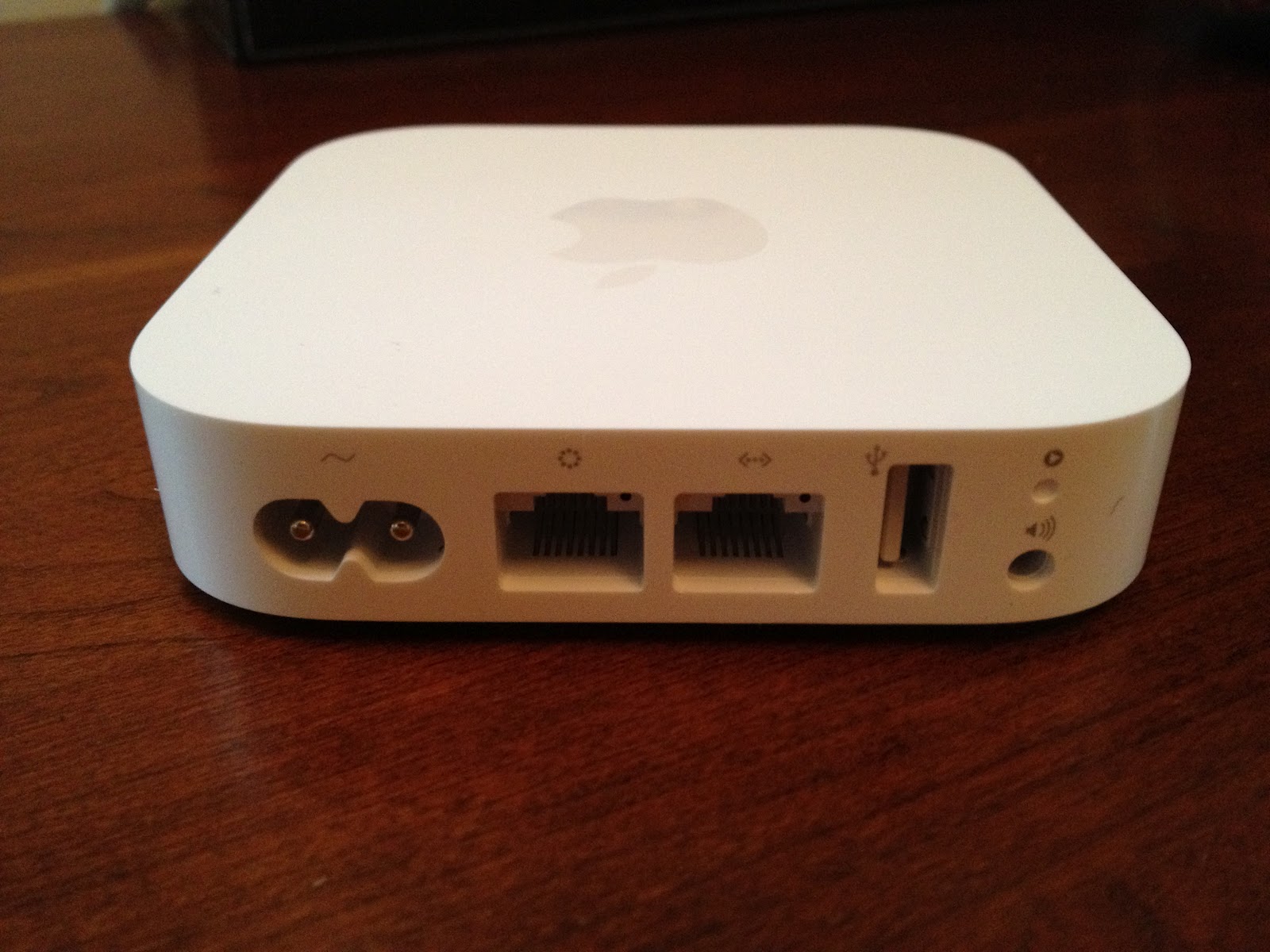

- #Apple airport express ports portable#
- #Apple airport express ports pro#
- #Apple airport express ports mac#
- #Apple airport express ports crack#
Once in the app, all the AirPorts on the network should automatically be discovered and laid out in a comprehensive tree design.
#Apple airport express ports mac#
After the initial setup, you can do more customizing using the AirPort app preinstalled on your Mac or downloaded from the iOS App Store. Then, quickly go through the wizard, and it’s ready to go. When I was setting up my 2012 AirPort Express for the first time, it was as easy as powering up the router, opening the WiFi setting on my iPhone, and choosing the AirPort setup. However, when the iPhone came around, the setup went next level. Now, I can’t speak about setting up the original AirPort devices because that was a bit before my time, but I assume it had a simple setup process. So, what was the benefit of going with one of Apple’s WiFi routers? It’s the same reason you pick up any other Apple accessory, integration into the Apple Ecosystem. So, they sold off the last of their inventory and instead started selling routers from Linksys, Netgear, and Eero at Apple Stores and online. Ultimately they knew when it was time to take a step back and focus on other things. Over the 19 years of the AirPort line’s existence, they got incremental updates until the market matured, and Apple decided to call it a day in 2018 after dispersing the AirPort team in 2016. As long as you were home and connected to your WiFi, your Mac would automatically back up.
#Apple airport express ports portable#
This would have been the perfect backup solution for portable MacBook users who wouldn’t have to worry about plugging in an external drive anymore. Its primary purpose was to serve as a backup drive for your Mac using the Time Machine app bundled with macOS Leopard. You could then access that storage from any computer over your local network. The Time Capsule was an AirPort Extreme featuring an internal drive with a capacity of 500GB, 1TB, or 2TB, depending on the model. The last router introduced was the AirPort Time Capsule. By the second generation, the design of the Express transitioned into a scaled-down AirPort Extreme, with all the same ports as the previous Express, other than an additional ethernet port to connect one device. The first two generations looked like a MacBook power adapter with a single ethernet port for connecting the adapter to the internet, a USB port to network connect a printer, and an aux port for AirTunes, the precursor of AirPlay. Then along came the AirPort Express in 2004, a super slimmed-down low-end version of the AirPort Extreme that only received two updates after its initial launch, first in 2008 and again in 2012. That’s not to say it was always an easy process, just that it was possible.) The add-on card, sold separately, would become obsolete by 2009 due to Wi-Fi becoming a standard feature built into Macs. (This was back in the day when users could open their computers and make modifications when needed.
#Apple airport express ports crack#
You could crack open your compatible Mac, slide the card into the designated slot, and that’s how you would get Wi-Fi. The AirPort Card, on the other hand, was an optional add-on for Macs that gave them Wi-Fi connectivity. But, since the beginning, the Base Station and Extreme were Apple’s high-end routers in the lineup, featuring multiple ethernet ports, better WiFi antennas, and later a USB port that could be used to network in a printer or for AirPort Disk, a feature that allowed you to create a network file server, also known as a NAS, by connecting an external drive. Along with a new name came a slim, square design that later transitioned into a tower with a smaller footprint. And, after five iterations, the AirPort Extreme would replace the Base Station in 2007. The unique dome-shaped Base Station was Apple’s first attempt at making a Wi-Fi router. The AirPort line first launched in 1999, with two products, the AirPort Base Station and the AirPort Card. Hence we had Apple’s line of Wi-Fi routers they called AirPort. Then, to help push the technology along Apple felt the need to enter the Wi-Fi router market themselves. It was only fitting that Wi-Fi came along as a convenient way to bring the internet to all these devices. Altogether, there were a lot of devices of different form factors Apple was trying to take online.
#Apple airport express ports pro#
Jobs’ also introduced a four-box grid with consumer and Pro on one axis and desktop and portable on the other. One of his groundbreaking announcements, and what leaped Apple back into the mainstream, was the release of the original iMac and Apple’s new focus on highlighting the power of the internet. Before looking at the state of AirPorts today, let’s first go back to where it all began.Īs the story always goes, we return to 1997, Steve Jobs’ has returned to Apple and is trying to turn around the failing company.


 0 kommentar(er)
0 kommentar(er)
